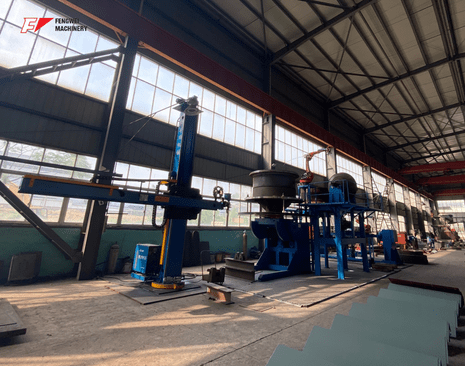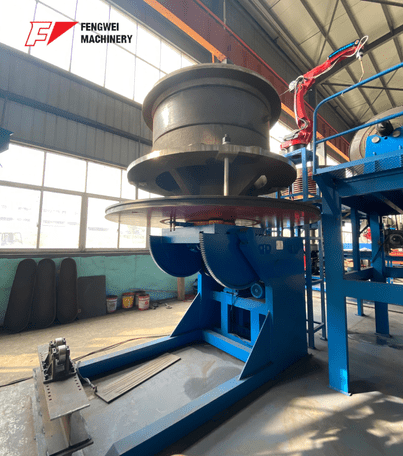Due to the different ways of operation and different structures, the operators need to choose the appropriate welding positioner to work. Let's take a look at the basic structure and characteristics of the positioner.
The positioner is suitable for the electric welding of the rectangular structural engineering machinery such as the rear frame of the loader and the roller frame, etc. The main feature of this kind is that the working device driven by the motor at one end of the column runs in a rotating direction and the other end follows the active end. Both sides of the column can be designed into lifting mode to adapt to different specifications of products. The disadvantage of this type is that it can only be rotated in a circumferential direction. When selecting, pay attention to whether the weld form is suitable.
Compared with the previous positioner model, this type increases the degree of freedom of rotation in another space based on the original one. The workpiece can be rotated to the required position. With large welding space and advanced design, it was successfully used by many construction machinery manufacturers at the beginning of the 21st century. The U-shaped two-seat head and tail double transition positioner can be applied to the welding of loader, excavator, roller, and other structural parts according to the process conditions of each factory.

The working device is L-type, with degree of freedom of rotation in two directions, and can rotate in either direction ±360°. Compared with other types of positioners, this one is open and easy to operate. The L-type one has been used successfully in the welding of the front frame of the loader, and the effect is very good, so it is well received by the operators.
The C-type rotary form is the same as the L-type machine. The working device of the positioner slightly changes according to the shape of the structural parts just for the convenience of the specific design. This type is suitable for loader bucket, excavator bucket, and other welding.
Its worktable has a degree of freedom for overall turnover, which can be reversed to an ideal welding position for welding. The workbench also has a degree of freedom for rotation. This positioner is suitable for some tube, shaft, disc, and other small and medium-sized complex structures.

1. Fixtures should have sufficient strength and stiffness. The fixture should bear the effect of various forces when it is put into use in production, so the fixture should have enough strength and rigidity.
2. Reliability of clamping. During clamping, the position of the workpiece should not be moved, and the shape and size of the product should conform to the drawing requirements. It is not allowed to slip the workpiece and oversize the restraint of the workpiece.
3. Flexible operation. Sufficient welding space should be ensured so that operators can have a good visual field and operating environment, and the whole process of welding production is in a stable working state.
4. Easy loading and unloading of welding parts. During operation, it should be considered that the products can be taken out from the fixture smoothly after assembly positioning welding or electric welding, and the products should be turned over or lifted to avoid damage.
5. Good technology. The designed fixture should be easy to manufacture, install, and operate, and easy to inspect, repair and replace vulnerable parts.
When the operator is working, he should operate according to different types of welding positioner, to improve the work efficiency and the utilization rate of the equipment. In order to extend its service life, users should also pay attention to the maintenance of the equipment.